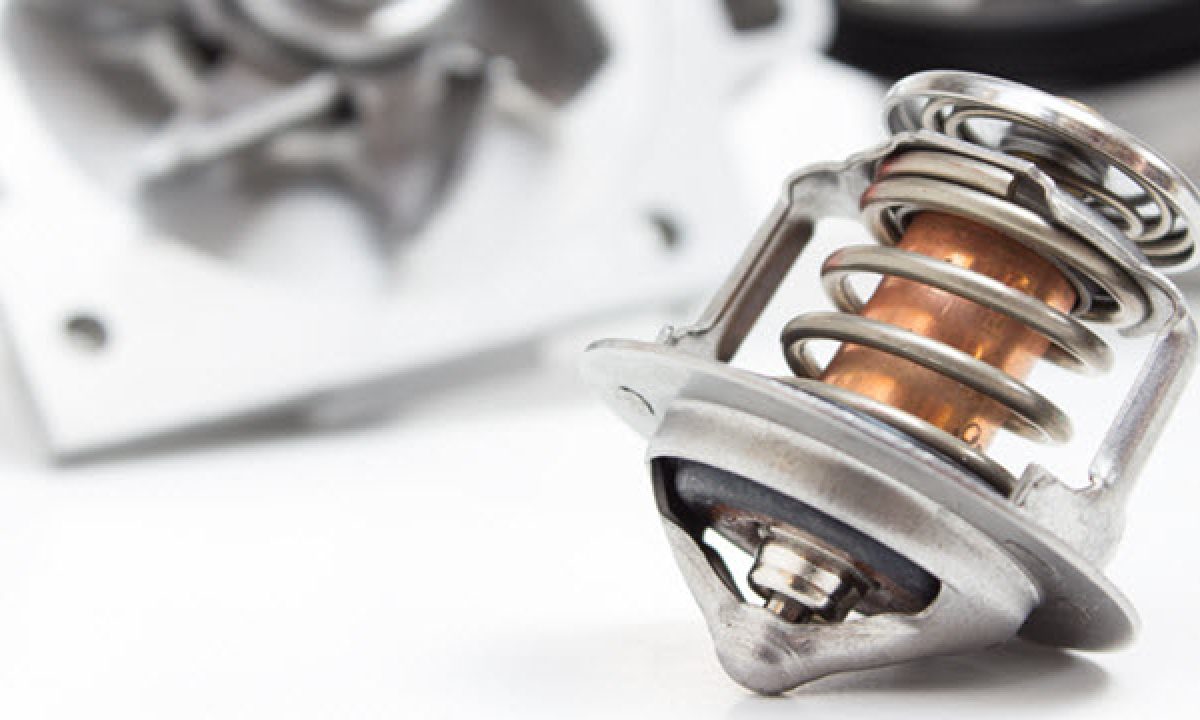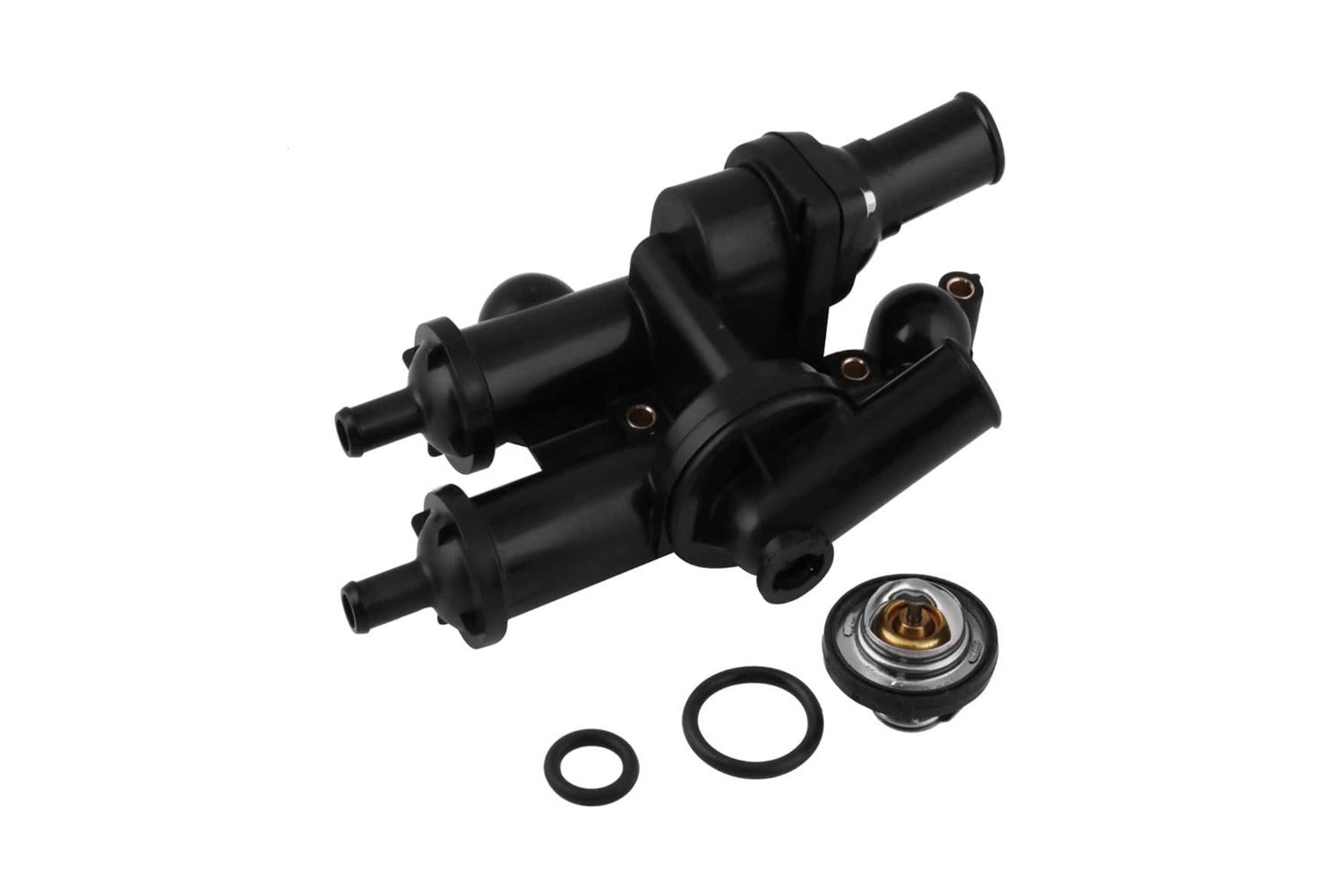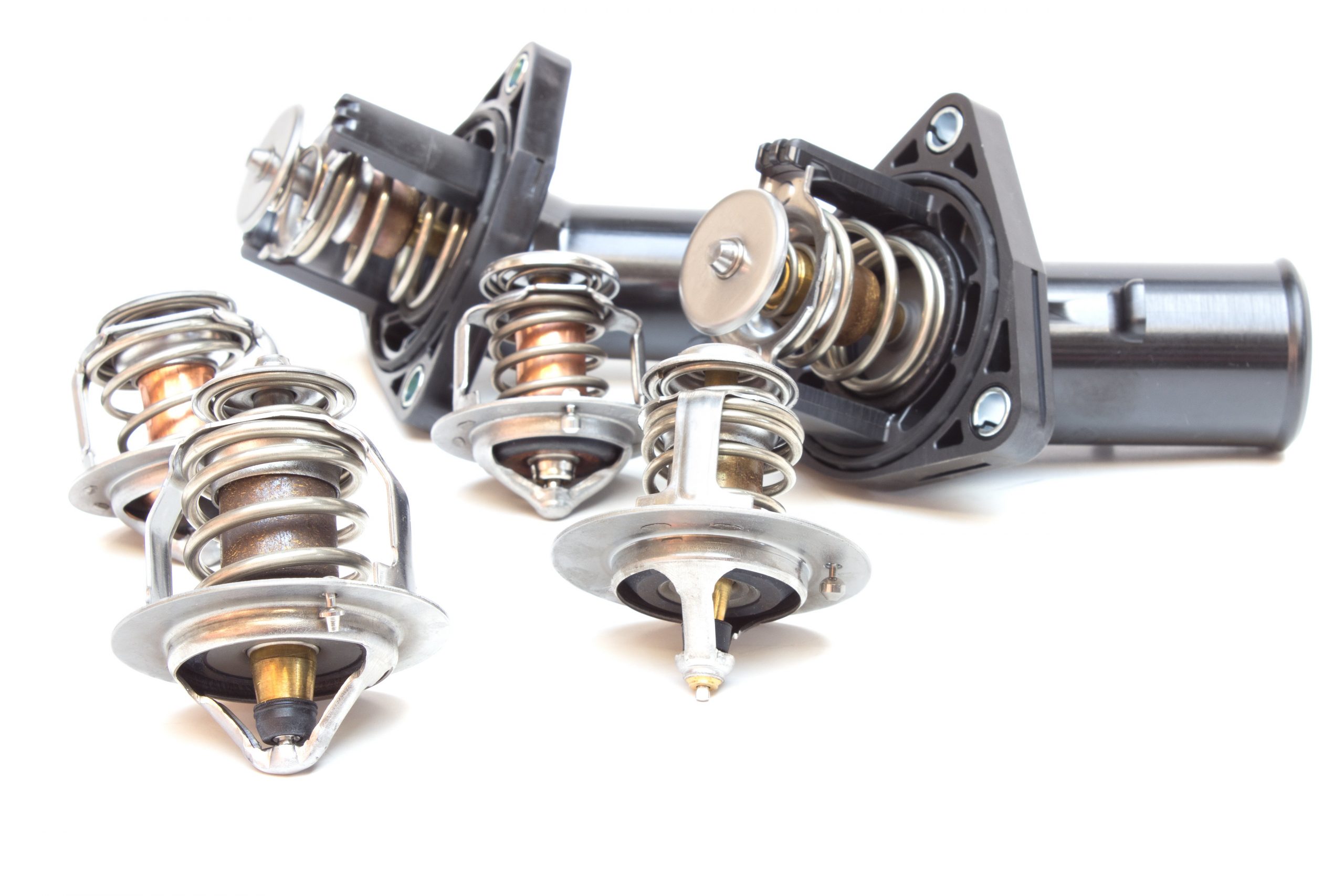Introduction
Welcome to our guide on car thermostats! If you own a car, you’ve probably heard about the importance of maintaining various components to keep it running smoothly. One such component is the car thermostat, which plays a crucial role in regulating the engine’s temperature. Understanding how long car thermostats last and the signs that indicate when they need replacement is essential for every car owner.
Firstly, let’s clarify what a car thermostat is. Essentially, it is a valve located between the engine and the radiator that controls the flow of coolant. Its primary function is to keep the engine running at an optimal temperature, ensuring efficient performance and preventing overheating.
Over time, car thermostats can wear out or become clogged, leading to various issues. It’s essential to recognize the warning signs that indicate your car thermostat may be on its last leg. These signs include:
- Engine running hotter or colder than usual: If you notice that your engine temperature gauge is consistently showing higher or lower temperatures than normal, it could be a sign of a malfunctioning thermostat.
- Fluctuating temperature gauge: If your temperature gauge frequently fluctuates between hot and cold or changes rapidly while driving, this could also indicate thermostat problems.
- Lack of heat or inconsistent heat from the heater: A failing thermostat can affect the functioning of your car’s heater, leading to a lack of warm air or inconsistent temperature output.
- Overheating engine: If your engine is frequently overheating, it could be a symptom of a faulty thermostat, as it may not be allowing coolant to flow properly.
While these signs can indicate thermostat issues, it’s important to note that they can also be symptoms of other problems. Consulting with a professional mechanic is recommended to accurately diagnose the issue.
The lifespan of a car thermostat can vary depending on several factors. In the next section, we will explore the factors that can affect the longevity of a car thermostat and how long you can typically expect them to last.
What is a car thermostat?
A car thermostat is a crucial component of the engine cooling system that helps regulate the temperature of the engine. Located between the engine and the radiator, the thermostat acts as a valve that controls the flow of coolant to maintain an optimal operating temperature.
The primary role of the car thermostat is to ensure that the engine runs at a temperature that strikes a balance between being too hot and too cold. It achieves this by opening and closing in response to the temperature of the engine coolant.
When the engine is cold, the thermostat remains closed, preventing the flow of coolant to the radiator. This allows the engine to warm up quickly and reach its optimal operating temperature. Once the engine reaches the desired temperature, the thermostat opens, allowing coolant to flow through the radiator and cool the engine.
The ability of the thermostat to regulate the engine’s temperature is crucial for optimal engine performance and fuel efficiency. If the thermostat fails to function correctly, it can result in various issues, including overheating or poor engine performance.
Car thermostats can come in different designs, including the traditional wax pellet type and the more modern electronic thermostat. Regardless of the design, the fundamental principle remains the same – controlling the flow of coolant to maintain a stable engine temperature.
Furthermore, car thermostats work in conjunction with other components of the cooling system, such as the radiator, water pump, and coolant. These components work together to ensure the engine remains within its ideal temperature range, preventing damage caused by excessive heat or cold.
Overall, the car thermostat plays a vital role in maintaining proper engine temperature, which is essential for optimal performance, fuel efficiency, and preventing engine damage. Understanding how the thermostat functions and recognizing the signs of a malfunctioning thermostat is crucial for every car owner.
Signs that your car thermostat needs to be replaced
The car thermostat is a small yet crucial component of your vehicle’s cooling system. Over time, it can become worn out or fail to function correctly, leading to potential issues. Here are some signs that indicate your car thermostat may need to be replaced:
- Engine running hotter or colder than usual: If you notice that your engine temperature gauge consistently shows higher or lower temperatures than what is normal for your vehicle, it could indicate a faulty thermostat. A malfunctioning thermostat may not be able to regulate the engine’s temperature properly.
- Fluctuating temperature gauge: A working thermostat should maintain a relatively stable temperature gauge reading during normal operation. If you experience frequent fluctuations in the temperature gauge, with the needle rapidly moving between hot and cold, it may be a sign that the thermostat is faulty.
- Lack of heat or inconsistent heat from the heater: The car thermostat also plays a role in controlling the flow of coolant to the heater core, which is responsible for providing warm air to the interior of your vehicle. If you notice a lack of heat or inconsistent heat output from your car’s heater, it could be due to a malfunctioning thermostat.
- Overheating engine: One of the most apparent signs of a faulty thermostat is an overheating engine. If you frequently experience engine overheating and have ruled out other possible causes such as low coolant or a malfunctioning radiator, the thermostat should be inspected. A failing thermostat may not open properly, preventing the flow of coolant to the radiator and causing the engine to overheat.
- Slow engine warm-up: A properly functioning thermostat allows the engine to warm up quickly to its optimal operating temperature. If your engine takes longer than usual to warm up, it could be a sign that the thermostat is stuck open, causing the engine to operate at a lower temperature than intended.
If you notice any of these signs or experience other issues that suggest a malfunctioning thermostat, it is recommended to have your car inspected by a qualified mechanic. They can perform diagnostic tests and determine if the thermostat needs to be replaced.
Remember, a faulty thermostat can impact the overall performance and efficiency of your vehicle, and it’s important to address the issue promptly to avoid potential damage to the engine or other components of the cooling system.
Factors that affect the lifespan of a car thermostat
The lifespan of a car thermostat can vary depending on several factors. Understanding these factors can help you anticipate when it may be time to replace your car thermostat. Here are some key factors that can affect the lifespan of a car thermostat:
- Quality of the thermostat: The quality of the thermostat itself can greatly impact its lifespan. Higher quality thermostats are often made from more durable materials and undergo rigorous testing to ensure optimal performance and longevity. Investing in a reputable brand and quality thermostat can increase its lifespan.
- Maintenance and usage: Proper maintenance and usage of your car’s cooling system can also affect the lifespan of the thermostat. Regular coolant flushes, ensuring proper coolant levels, and avoiding excessive strain on the cooling system can all contribute to a longer lifespan for the thermostat.
- Driving conditions: The driving conditions you frequently encounter can also impact the lifespan of the car thermostat. For example, if you frequently drive in extreme heat or cold conditions, the thermostat may be subjected to more stress and wear, potentially shortening its lifespan.
- Driving habits: Aggressive driving habits, such as sudden acceleration or braking, can put a strain on the engine and cooling system, potentially affecting the lifespan of the thermostat. Maintaining smooth driving habits can help ensure the longevity of the thermostat.
- Environmental factors: Environmental factors such as humidity, exposure to chemicals or contaminants, and the overall climate can also impact the lifespan of the car thermostat. Corrosion or damage caused by environmental factors can lead to premature failure.
It’s important to note that although car thermostats can last for several years, they are not designed to last the lifetime of the vehicle. The lifespan of a car thermostat typically ranges from 50,000 to 100,000 miles or 5 to 10 years. However, these are general estimates, and individual experiences may vary.
While it isn’t possible to predict the exact lifespan of a car thermostat, keeping these factors in mind can help you anticipate when it may be time to replace it. Additionally, paying attention to the signs we discussed earlier can also be a good indicator that your thermostat may be nearing the end of its lifespan and requiring replacement.
Regular maintenance of your vehicle’s cooling system, including periodic inspections and addressing any issues promptly, can help prolong the lifespan of the car thermostat and ensure optimal performance.
How long do car thermostats typically last?
The lifespan of a car thermostat can vary depending on several factors, including the quality of the thermostat, maintenance practices, driving conditions, and environmental factors. While there is no set expiration date for a car thermostat, they generally last between 50,000 to 100,000 miles or approximately 5 to 10 years.
However, it’s important to note that these are general estimates, and individual experiences may vary. Some thermostats may fail prematurely due to manufacturing defects or other unforeseen issues, while others may last well beyond the average lifespan.
Regular maintenance of your vehicle’s cooling system can help prolong the lifespan of the thermostat. This includes routine inspections, checking coolant levels, and performing coolant flushes as recommended by the manufacturer. Adequate maintenance not only ensures that the thermostat operates efficiently but also helps identify any potential issues before they worsen.
Driving conditions also play a role in the longevity of a car thermostat. If you frequently drive in extreme temperatures, such as extreme heat or cold, it can put additional stress on the thermostat, potentially shortening its lifespan. Additionally, aggressive driving habits, such as sudden acceleration or braking, can strain the cooling system and impact the lifespan of the thermostat.
Environmental factors can also affect the lifespan of a car thermostat. Exposure to chemicals, contaminants, and high levels of humidity can cause corrosion or damage, leading to premature failure of the thermostat. It’s important to keep the cooling system protected from these elements as much as possible.
Ultimately, it’s important to pay attention to the signs and symptoms that your car thermostat may need to be replaced, regardless of its age. If you notice frequent overheating, erratic temperature gauge readings, lack of heat from the heater, or other cooling system issues, it’s time to have your thermostat inspected by a qualified mechanic. They will be able to determine if a replacement is necessary and help ensure the continued optimal performance of your vehicle.
When should you replace your car thermostat?
Knowing when to replace your car thermostat is important to maintain the proper functioning of your vehicle’s cooling system. While there is no exact timeframe for when a car thermostat needs replacement, there are certain signs and factors to consider. Here are some indications that it may be time to replace your car thermostat:
1. Consistent overheating: If your engine consistently overheats and all other possible causes, such as low coolant or a malfunctioning radiator, have been ruled out, it may be due to a failing thermostat. A thermostat that no longer opens and closes properly can hinder the flow of coolant and cause engine overheating.
2. Fluctuating temperature gauge: A properly functioning thermostat should maintain a relatively stable temperature gauge reading during normal operation. If you notice frequent fluctuations in the temperature gauge, with the needle rapidly moving between hot and cold, it is likely a sign of a faulty thermostat.
3. Lack of heat or inconsistent heat from the heater: The car thermostat is responsible for regulating the flow of coolant to the heater core, which controls the warm air output in your vehicle’s cabin. If you experience a lack of heat or inconsistent heat from the heater, it could indicate a malfunctioning thermostat.
4. Slow engine warm-up: A properly functioning thermostat helps the engine warm up quickly to its optimal operating temperature. If your engine takes longer than usual to warm up, it could be a sign that the thermostat is not closing properly, causing the engine to operate at a lower temperature than intended.
5. Age and mileage: While there is no set lifespan for a car thermostat, if your vehicle has reached the 50,000 to 100,000-mile mark or if the thermostat is 5 to 10 years old, it may be a good idea to consider replacing it preventively, especially if you have experienced any of the above signs.
6. Other cooling system issues: If you have already addressed other cooling system issues, such as a faulty water pump or radiator, and are still experiencing problems, it is worth checking the thermostat. A failing thermostat can contribute to or exacerbate other cooling system issues.
If you observe any of these signs or suspect that your car thermostat may be malfunctioning, it is advisable to consult with a qualified mechanic. They can perform diagnostic tests to pinpoint the issue and determine if a thermostat replacement is necessary. Replacing a faulty thermostat in a timely manner can help prevent further damage to the engine and ensure the proper functioning of your vehicle’s cooling system.
How to replace a car thermostat
If you’ve determined that your car thermostat needs to be replaced, you may be wondering how to go about the process. While it is recommended to have a qualified mechanic perform the replacement, if you are familiar with basic car maintenance and have the necessary tools, you can attempt to replace the thermostat yourself. Here is a general guide to help you through the process:
1. Gather the necessary materials: You will need a new thermostat (specific to your vehicle’s make and model), a gasket or sealant, a socket wrench or adjustable wrench, a drain pan, and a coolant refill kit.
2. Prepare your vehicle: Start by ensuring that your vehicle’s engine is cool and in a safe working environment. You may need to lift the car using a jack and place it on jack stands to access the thermostat housing.
3. Drain the coolant: Locate the drain plug on the radiator or remove the lower radiator hose to drain the coolant into a drain pan. Follow proper disposal procedures as coolant is toxic to the environment.
4. Remove the thermostat housing: Locate the thermostat housing, which is typically connected to the engine block. Loosen the bolts or screws using a socket wrench or adjustable wrench and carefully remove the housing.
5. Replace the thermostat: Remove the old thermostat from the housing, noting its orientation, and install the new thermostat in the same position. Ensure that the thermostat fits securely and is aligned properly.
6. Replace the gasket or apply sealant: Depending on your vehicle’s configuration, you may need to replace the gasket between the thermostat housing and the engine block. If a gasket is not required, apply a thin layer of gasket sealant to create a proper seal.
7. Reassemble and refill: Reinstall the thermostat housing and tighten the bolts or screws securely. Reconnect the lower radiator hose or replace the drain plug. Refill the coolant using a coolant refill kit, following the manufacturer’s instructions.
8. Test for leaks and proper operation: Once the coolant has been refilled, start the engine and allow it to warm up. Monitor the temperature gauge and check for any coolant leaks. Ensure that the thermostat is functioning correctly by observing proper temperature regulation.
It is important to consult your vehicle’s specific repair manual for detailed instructions or refer to online resources for guidance. If you are unsure or uncomfortable with performing the replacement yourself, it is best to leave it to a professional mechanic.
Remember to properly dispose of the old thermostat and any coolant in accordance with local regulations. Regular maintenance and inspection of your vehicle’s cooling system will help ensure the longevity and optimal performance of the new thermostat.
Conclusion
Understanding car thermostats and knowing when to replace them is crucial for the proper functioning of your vehicle’s cooling system. A car thermostat plays a vital role in regulating the engine’s temperature, ensuring optimal performance and preventing overheating. By recognizing the signs that your car thermostat needs to be replaced, such as consistent overheating, fluctuating temperature gauge, lack of heat from the heater, and slow engine warm-up, you can take the necessary steps to address the issue.
The lifespan of a car thermostat can vary depending on factors such as quality, maintenance practices, driving conditions, and environmental factors. While there is no set expiration date for a thermostat, they generally last between 50,000 to 100,000 miles or approximately 5 to 10 years. Regular maintenance of the cooling system, proper coolant levels, and avoidance of extreme driving habits can help prolong the lifespan of the thermostat.
If you determine that your car thermostat needs replacement, you have the option to do it yourself or seek the assistance of a qualified mechanic. Following the proper steps, including gathering the necessary materials, draining the coolant, removing the thermostat housing, replacing the thermostat, and reassembling and refilling the system, will ensure a successful replacement process. However, if you are uncertain or uncomfortable with the DIY approach, it is always recommended to consult a professional.
Maintaining a reliable and functioning car thermostat is essential to ensure the overall health of your vehicle’s engine. By being aware of the signs of a failing thermostat and understanding the factors that affect its lifespan, you can take proactive measures to prevent cooling system issues and keep your car running smoothly. Remember, when in doubt, seek professional guidance to ensure the proper functioning of your car’s cooling system and the longevity of your thermostat.

























